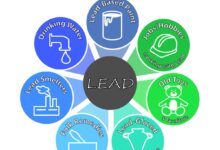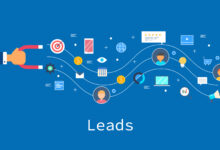Crm Lead Generation: 7 Powerful Strategies to Skyrocket Sales
Want to turn strangers into loyal customers? Mastering CRM lead generation is the ultimate game-changer for modern businesses.
[ez-toc]
What Is CRM Lead Generation and Why It Matters

CRM lead generation is the strategic process of identifying, attracting, and converting potential customers using Customer Relationship Management (CRM) tools. It’s not just about collecting names—it’s about building meaningful relationships from the first point of contact. In today’s hyper-competitive market, businesses that leverage CRM systems to generate leads gain a significant edge in efficiency, personalization, and scalability.
Defining CRM and Lead Generation
CRM stands for Customer Relationship Management—a technology and strategy used to manage all interactions with current and potential customers. Lead generation, on the other hand, refers to the process of sparking interest in a product or service and capturing contact information. When combined, CRM lead generation becomes a powerful engine that nurtures prospects through every stage of the sales funnel.
- CRM systems store customer data, track interactions, and automate follow-ups.
- Lead generation focuses on attracting prospects via content, ads, events, or referrals.
- Together, they create a seamless journey from awareness to conversion.
“A CRM without lead generation is like a car without fuel—it might look good, but it won’t go anywhere.” — Sales Strategy Expert, Jane Doe
The Evolution of CRM in Lead Generation
Early CRM systems were primarily used for contact management and sales tracking. However, with advancements in AI, automation, and data analytics, modern CRMs have evolved into comprehensive platforms for end-to-end lead management. Today’s tools like Salesforce, HubSpot, and Zoho CRM integrate marketing, sales, and customer service functions to streamline CRM lead generation.
- 1990s: CRMs focused on internal sales tracking.
- 2000s: Web integration allowed basic lead capture forms.
- 2010s–Present: Cloud-based, AI-driven platforms enable real-time lead scoring and nurturing.
How CRM Systems Transform Lead Capture
One of the most impactful benefits of CRM lead generation is its ability to centralize and automate the lead capture process. Instead of scattered spreadsheets and missed opportunities, CRM systems provide a unified platform where every lead is tracked, categorized, and followed up on systematically.
Automated Lead Capture from Multiple Channels
Modern CRM platforms can pull leads from various sources including website forms, social media, email campaigns, live chats, and even phone calls. For example, when a visitor fills out a form on your landing page, the CRM automatically logs their details, assigns a lead score, and triggers a follow-up sequence.
- Website forms integrated with CRM via APIs or plugins.
- Social media leads captured through Facebook Lead Ads or LinkedIn integrations.
- Email inquiries automatically converted into leads using smart parsing tools.
“Automation doesn’t replace human touch—it amplifies it by ensuring no lead slips through the cracks.”
Centralized Database for Better Visibility
A centralized CRM database allows sales and marketing teams to have a 360-degree view of each lead. This visibility helps in understanding customer behavior, preferences, and engagement history, which are critical for personalized outreach.
- All lead interactions (emails, calls, meetings) are logged in one place.
- Team members can collaborate without duplicating efforts.
- Managers gain real-time insights into pipeline health and conversion rates.
Top 7 CRM Lead Generation Strategies That Work
To truly unlock the power of CRM lead generation, businesses need actionable strategies that align technology with human insight. Below are seven proven methods that integrate seamlessly with CRM platforms to boost lead volume and quality.
1. Use Lead Scoring to Prioritize High-Value Prospects
Not all leads are created equal. Lead scoring assigns numerical values to prospects based on their behavior, demographics, and engagement level. CRM systems use this data to rank leads, helping sales teams focus on those most likely to convert.
- Behavioral scoring: Based on actions like visiting pricing pages or downloading whitepapers.
- Demographic scoring: Based on job title, company size, or industry.
- CRM tools like Marketo and Pardot offer built-in lead scoring models.
“Lead scoring reduced our sales cycle by 30% and increased conversion rates by 45%.” — Marketing Director, TechStart Inc.
2. Integrate CRM with Marketing Automation
Connecting your CRM with marketing automation tools enables seamless nurturing of leads through personalized email sequences, dynamic content, and behavioral triggers. This integration ensures that every lead receives timely, relevant communication based on their stage in the buyer’s journey.
- Set up drip campaigns that send targeted emails after a lead downloads a guide.
- Trigger SMS or push notifications when a lead abandons a cart or webinar registration.
- Use CRM data to segment audiences for hyper-personalized campaigns.
For instance, ActiveCampaign integrates directly with popular CRMs to deliver behavior-based messaging that boosts engagement and conversions.
3. Leverage Web Forms and Landing Pages
Well-designed web forms and high-converting landing pages are essential for effective CRM lead generation. When integrated with your CRM, these tools capture lead data in real time and automatically add prospects to your database.
- Use progressive profiling to collect more information over time without overwhelming users.
- Embed CRM-powered forms directly into blogs, resource centers, and product pages.
- A/B test headlines, CTAs, and form lengths to optimize conversion rates.
Platforms like Unbounce and Instapage allow drag-and-drop creation of landing pages that sync instantly with CRM systems.
4. Implement Chatbots for Instant Engagement
Chatbots powered by AI can engage website visitors 24/7, answer common questions, and qualify leads before passing them to sales reps. When integrated with a CRM, chatbot conversations are logged, and leads are automatically updated with new interaction data.
- Use chatbots to pre-qualify leads by asking about budget, timeline, and needs.
- Route hot leads to live agents based on predefined criteria.
- Collect contact info through conversational flows instead of static forms.
Tools like Intercom and Drift offer robust CRM integrations that make chatbot-driven lead generation seamless.
5. Sync Social Media Lead Ads with CRM
Social media platforms like Facebook, LinkedIn, and Instagram offer lead ad formats that allow users to submit their information without leaving the app. By syncing these ads with your CRM, you can capture high-intent leads instantly and begin nurturing them right away.
- Create targeted campaigns for specific buyer personas.
- Use UTM parameters to track which ads generate the most CRM leads.
- Automatically assign leads to sales reps based on geography or product interest.
For example, LinkedIn Lead Gen Forms integrate with HubSpot CRM, allowing B2B companies to capture decision-makers’ details with minimal friction.
6. Nurture Leads with Email Sequences
Email remains one of the most effective channels for CRM lead generation. Automated email sequences—also known as drip campaigns—help build trust, educate prospects, and guide them toward a purchase decision.
- Send a welcome series after a lead opts in.
- Share case studies, testimonials, and product demos based on lead behavior.
- Re-engage inactive leads with win-back campaigns.
CRMs like Zoho CRM include built-in email marketing tools that track opens, clicks, and replies, giving you full visibility into lead engagement.
7. Analyze and Optimize with CRM Reporting
Data is the backbone of successful CRM lead generation. Regularly analyzing CRM reports helps identify what’s working, where leads are dropping off, and how to improve conversion rates.
- Monitor key metrics like lead-to-customer conversion rate, average deal size, and sales cycle length.
- Use funnel visualization to spot bottlenecks in the lead journey.
- Run A/B tests on lead sources, messaging, and follow-up timing.
Advanced analytics features in platforms like Salesforce Sales Cloud provide predictive insights and AI-driven recommendations to optimize lead generation efforts.
Choosing the Right CRM for Lead Generation Success
Not all CRM systems are built equally when it comes to lead generation. The right platform should offer robust automation, seamless integrations, and intuitive lead management features. Here’s how to choose one that fits your business needs.
Key Features to Look For
When evaluating CRM solutions for CRM lead generation, focus on capabilities that directly impact lead acquisition and nurturing.
- Lead capture and import tools (web forms, email parsing, CSV uploads).
- Lead scoring and segmentation options.
- Marketing automation and email campaign builders.
- Integration with social media, advertising platforms, and live chat tools.
- Mobile access for on-the-go lead management.
For small businesses, HubSpot CRM offers a free tier with powerful lead generation tools. Larger enterprises may prefer Microsoft Dynamics 365 for its scalability and deep integration with Office 365.
Top CRM Platforms for Lead Generation
Here’s a quick comparison of leading CRM platforms known for their CRM lead generation capabilities:
- HubSpot CRM: Best for inbound marketing and seamless automation. Offers free plan with excellent lead capture and nurturing tools.
- Salesforce: Most customizable and feature-rich. Ideal for large teams with complex sales processes.
- Zoho CRM: Affordable and packed with AI-powered lead management features. Great for mid-sized businesses.
- Pipedrive: Visual sales pipeline makes it easy to track leads from first contact to close.
- Insightly: Strong project and contact management for service-based businesses generating leads.
Each of these platforms supports CRM lead generation through integrations, automation, and real-time analytics.
Integrating CRM with Marketing Channels for Maximum Impact
To maximize CRM lead generation, your CRM must work in harmony with your marketing channels. Siloed systems lead to missed opportunities and inefficient follow-ups. Integration ensures that every lead, regardless of source, enters the CRM instantly and is nurtured appropriately.
Email Marketing Integration
Email campaigns are a primary source of leads. Integrating your email marketing tool (like Mailchimp or Constant Contact) with your CRM ensures that subscribers are automatically added as leads, and their engagement is tracked.
- Sync email list signups with CRM contact records.
- Tag leads based on which email campaigns they engage with.
- Trigger follow-up tasks when a lead clicks a specific link.
This level of integration turns passive email lists into active, CRM-managed sales opportunities.
Social Media and Paid Ads Sync
Paid advertising on Google, Facebook, and LinkedIn generates high-quality leads. By connecting these platforms to your CRM, you can automate lead capture and attribution.
- Use Facebook Lead Ads to collect leads and push them directly into your CRM.
- Track which ad campaigns generate the most qualified leads using UTM parameters.
- Automatically assign leads from Google Ads to sales reps based on location or keyword.
Tools like Workato and Zapier make it easy to create no-code automations between ads platforms and CRM systems.
Website and Chat Integration
Your website is your digital storefront and a prime lead generation channel. Integrating live chat, chatbots, and CRM forms ensures no visitor goes unnoticed.
- Embed CRM-powered chat widgets that log conversations and create lead records.
- Use exit-intent popups to capture leads before they leave your site.
- Track visitor behavior (pages visited, time on site) within the CRM for better lead scoring.
For example, Intercom integrates with Salesforce to provide real-time visitor insights and automated lead qualification.
Measuring the ROI of CRM Lead Generation
Investing in CRM lead generation only makes sense if you can measure its return. Tracking key performance indicators (KPIs) helps justify the investment, optimize strategies, and scale what works.
Key Metrics to Track
To evaluate the effectiveness of your CRM lead generation efforts, monitor these essential metrics:
- Lead Conversion Rate: Percentage of leads that become customers.
- Cost Per Lead (CPL): Total marketing spend divided by number of leads generated.
- Customer Acquisition Cost (CAC): Total sales and marketing cost to acquire a customer.
- Lead Response Time: How quickly your team follows up with new leads.
- Lead-to-Deal Velocity: Average time it takes for a lead to move through the sales pipeline.
CRMs provide dashboards that visualize these metrics in real time, enabling data-driven decisions.
Using CRM Analytics for Continuous Improvement
Modern CRMs go beyond basic reporting—they offer predictive analytics, trend forecasting, and AI-powered insights. These tools help you anticipate customer needs, identify high-performing channels, and refine your CRM lead generation strategy.
- Use funnel analysis to see where leads drop off.
- Identify top-performing content that drives the most leads.
- Forecast future lead volume based on historical data.
For instance, Salesforce Einstein uses AI to recommend the best time to contact a lead, improving response rates and conversions.
Common CRM Lead Generation Mistakes to Avoid
Even with the best tools, businesses often make critical errors that undermine their CRM lead generation efforts. Recognizing and avoiding these pitfalls can save time, money, and missed opportunities.
Poor Data Quality and Hygiene
Garbage in, garbage out. If your CRM is filled with outdated, duplicate, or incomplete data, your lead generation efforts will suffer. Poor data quality leads to failed follow-ups, miscommunication, and wasted resources.
- Regularly clean your CRM database to remove duplicates and invalid entries.
- Enforce data entry standards across your team.
- Use validation tools to ensure email and phone number accuracy.
“We improved our conversion rate by 40% just by cleaning our CRM data and removing inactive leads.” — Sales Ops Manager, GrowthCo
Ignoring Lead Nurturing
Many companies focus only on lead capture but neglect nurturing. Not every lead is ready to buy immediately. Without a structured nurturing process, most leads go cold.
- Develop a multi-touch nurturing strategy using email, content, and retargeting ads.
- Personalize messages based on lead behavior and interests.
- Use CRM workflows to automate nurturing sequences.
According to MarketingProfs, nurtured leads make 47% larger purchases than non-nurtured leads.
Over-Automating the Human Touch
While automation is powerful, over-reliance on bots and templates can make your outreach feel impersonal. Leads want to feel understood, not processed.
- Balance automation with personalized follow-ups.
- Train sales reps to review CRM notes before contacting leads.
- Use AI insights to inform human conversations, not replace them.
The goal is to use CRM lead generation to enhance—not eliminate—the human connection.
What is CRM lead generation?
CRM lead generation is the process of attracting and converting potential customers using Customer Relationship Management tools. It combines lead capture, scoring, nurturing, and tracking within a centralized system to improve sales efficiency and conversion rates.
How does CRM improve lead generation?
CRM systems improve lead generation by automating data capture, enabling personalized follow-ups, providing real-time analytics, and integrating with marketing channels. This ensures no lead is lost and every opportunity is nurtured effectively.
Which CRM is best for lead generation?
HubSpot CRM, Salesforce, and Zoho CRM are among the best for lead generation due to their robust automation, integration capabilities, and lead management features. The best choice depends on your business size, budget, and specific needs.
Can small businesses benefit from CRM lead generation?
Absolutely. Small businesses can leverage free or low-cost CRM tools like HubSpot CRM to organize leads, automate follow-ups, and scale their sales efforts without needing a large team.
How do you measure the success of CRM lead generation?
Success is measured through KPIs like lead conversion rate, cost per lead, customer acquisition cost, lead response time, and sales cycle length. CRM analytics dashboards provide real-time insights into these metrics.
CRM lead generation is not just a tool—it’s a strategic advantage. By combining technology with human insight, businesses can attract more leads, convert them faster, and build lasting customer relationships. From choosing the right CRM to avoiding common pitfalls, every step in the process impacts your bottom line. The strategies outlined—lead scoring, automation, multi-channel integration, and data-driven optimization—are proven methods to maximize results. Whether you’re a startup or an enterprise, investing in CRM lead generation is essential for sustainable growth in today’s digital economy.
Further Reading:



